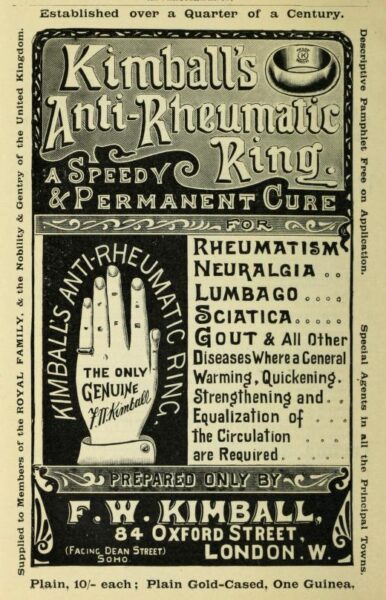(Image: Brunette Combing her Hair. James Carroll Beckwith, 1851)
We continue the hair theme today with the pungent-sounding Lockyer’s Sulphur Hair Restorer. This preparation was scrutinised in 1912 by the British Medical Association in More Secret Remedies: What they cost and what they contain. Analysis showed that it comprised:
Precipitated Sulphur…..1.3 parts
Lead acetate……………..1.6 parts
Lead sulphate……………0.4 parts
Glycerine………………….9.6 parts
plus “Rose water sufficient to produce 100 parts by measure.”
The authors pointed out that the lead sulphate probably resulted from a chemical reaction, so the original amount of lead acetate (still used in some modern hair dyes) would have been greater. When More Secret Remedies was written, a 12 fl. oz. bottle of Lockyer’s was still 1s. 6d, as in this 1875 advert. The BMA estimated that the actual cost of ingredients was tuppence.
LOCKYER’s SULPHUR HAIR RESTORER
is the best, safest, and cheapest. It restores the
former colour to grey hair in a few days, is quite harmless,
and the best hair-dressing that can be used. Large bot-
tles, 1s. 6d. each. Sold by Chemists and Hairdressers
everywhere, and J. Pepper, 237, Tottenham-court-road,
London, whose name and address are on the label, or it is
spurious. Cases of three bottles, packed for country, sent
on receipt of 54 stamps.
Source: The Preston Guardian, Saturday 16th January 1875




I have a bottle in good condition labeled “Lockyer’s Sulphur Hair Restorer.” It resembles a bottle for a product made by F.M. Rimmington and Son, chemists from Bradford, England. Possible circa 1890-1910. Is this possible and how can I determine the value?
Thank you for your assistance.
Rosemary Goudy